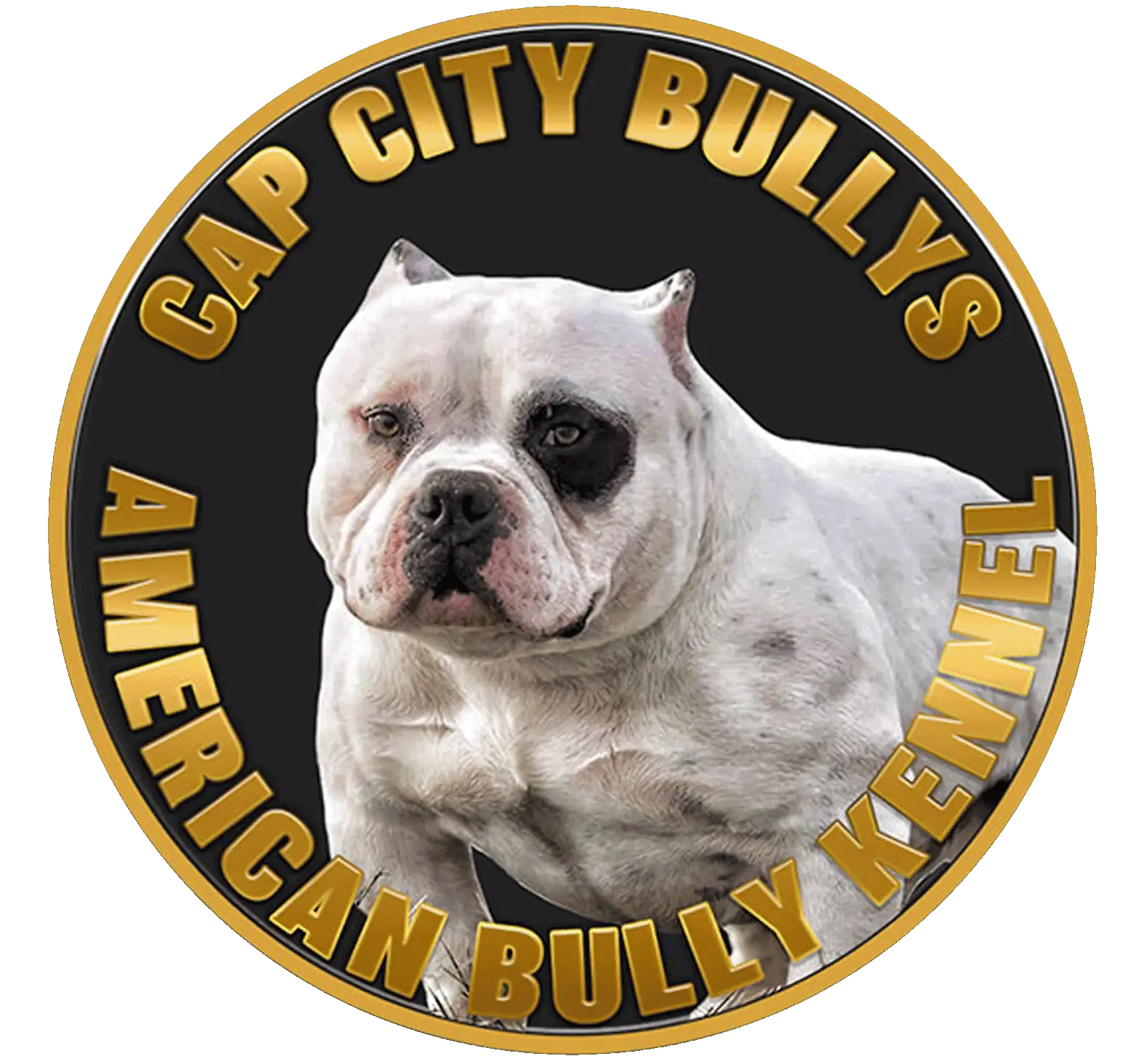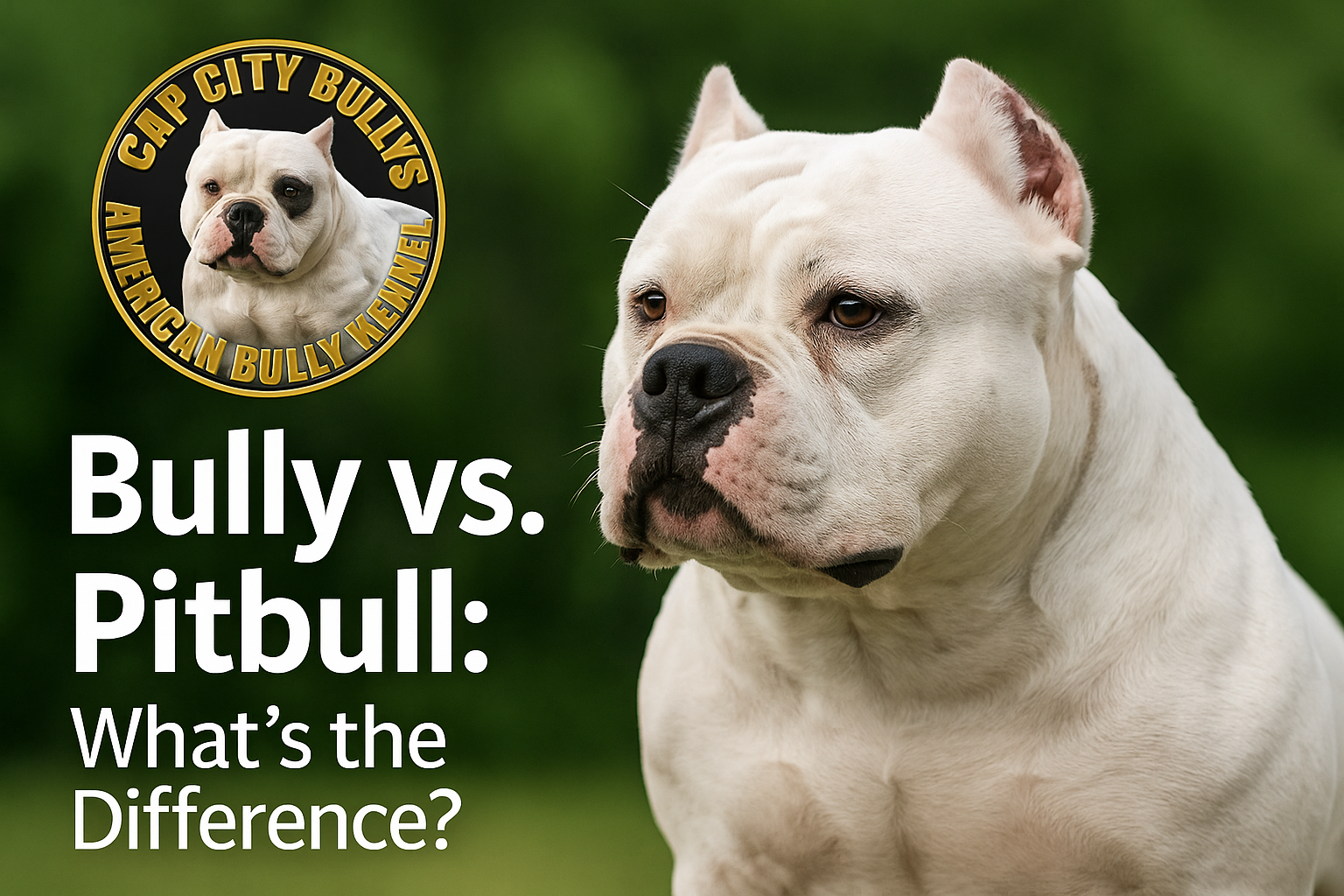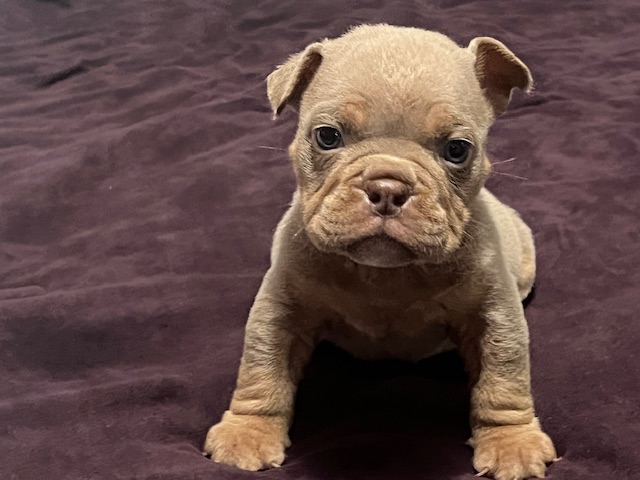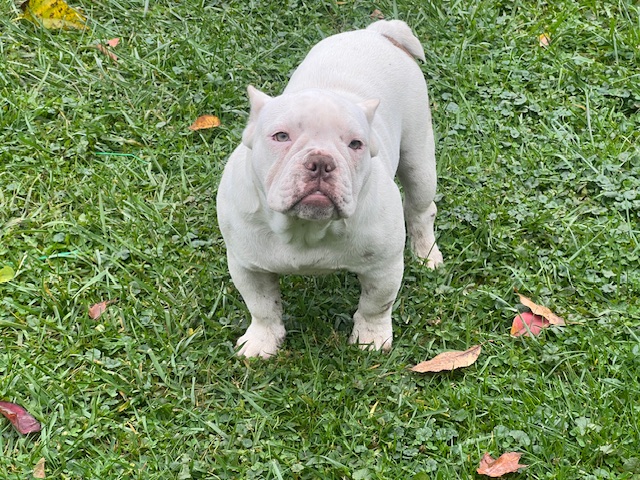Understanding the distinctions between American Bullies and Pitbulls is crucial for prospective dog owners, particularly those in Pennsylvania where breed popularity and regulations intersect. While both breeds share muscular builds and a storied history, they diverge significantly in lineage, appearance, temperament, and legal recognition. In this in-depth, 2,500-word guide, we’ll explore:
- Origins and evolution of the Pitbull and the American Bully
- Key physical and behavioral differences
- Health considerations and lifespan expectations
- Pennsylvania-specific breed regulations and community insights
- Training, socialization, and lifestyle fit
- Why Erie, PA’s own Cap City Bullys stands out for American Bully enthusiasts
Whether you’re weighing a loyal family protector against a high-drive show dog, this article will equip you with the insights needed to choose the right breed—plus links to explore available litters, stud services, and more from Pennsylvania’s premier American Bully breeder.
1. A Tale of Two Breeds: Origins & Evolution
Pitbull Roots
The term “Pitbull” actually encompasses several breeds—most notably the American Pit Bull Terrier, American Staffordshire Terrier, and Staffordshire Bull Terrier. These dogs trace back to 19th-century England, where bulldogs and terriers were crossed to create agile, tenacious fighters and ratters. Brought to America by immigrants, the breed’s strength, loyalty, and athleticism made it a companion for farmers, working-class families, and later, members of law enforcement and search-and-rescue teams.
Over time, the Pitbull’s reputation oscillated between esteemed working dog and unfairly stigmatized “bully breed.” However, enthusiasts in Pennsylvania’s dog-loving communities—especially in Erie, Pittsburgh, and Philadelphia—continued to champion the breed’s positive traits, focusing on proper training and socialization.
The Rise of the American Bully
By the late 20th century, breeders sought to amplify the Pitbull’s hallmark muscle tone and friendly disposition to better suit family life and the show ring. The result was the American Bully: a distinct breed founded in the United States during the 1980s–1990s. Selective breeding emphasized a wider chest, blockier head, shorter muzzle, and calmer temperament. Three major registries—the United Kennel Club (UKC), the American Bully Registry (ABR), and the American Bully Kennel Club (ABKC)—formalized standards, elevating the Bully from underground scene to mainstream recognition.
Today’s American Bully comes in five size classes ( Micro, Pocket, Standard, Classic, XL), each regulated by strict conformation guidelines. Breeders like Cap City Bullys in Erie, PA, have spent 15+ years refining pedigrees, ensuring every puppy embodies health, temperament, and show potential.
2. Physical Differences: Build, Size & Appearance
Head & Muzzle
- Pitbull: Typically longer muzzle, pronounced stop (the dip between forehead and muzzle), and triangular ears (cropped or natural).
- American Bully: Broader, blockier head with a shorter muzzle and pronounced cheeks. The stop is less steep, giving a “pushed-in” facial profile.
Body & Height
- Pitbull: Athletic, lean muscles; height ranges from 17–21 inches at the shoulder.
- American Bully: Beefier build; Standard size stands 16–20 inches, while XL classes can exceed 20 inches. Pockets are shorter but stockier—a hallmark of the Micro and Pocket Bully varieties.
Coat & Color Variations
Both breeds carry short, glossy coats in myriad colors—fawn, blue, black, brindle, and various pied patterns. However, the Bully’s thicker neck, broader chest, and heavier bone structure give it a more “compact powerhouse” look compared to the Pitbull’s lean athlete silhouette.
3. Temperament & Behavior
Pitbull Personality
Despite negative media portrayals, properly raised Pitbulls are renowned for their loyalty, high energy, and people-pleasing nature. They excel in agility, obedience, and therapy work. However, they do require consistent mental stimulation and vigorous exercise—think daily runs, fetch sessions, and puzzle toys.
American Bully Disposition
American Bullies were bred with a calmer, more adaptable temperament in mind. These dogs often settle more quickly in home environments, making them ideal for families, first-time owners, and show competitors. Their sociable character and gentle disposition around children are celebrated by Bully enthusiasts nationwide.
Insider Tip: If you live in Erie, PA, and crave that Bully “look” with a mellow attitude, an American Bully puppy from Cap City Bullys may suit you better than a high-drive Pitbull.
4. Health & Lifespan: What to Expect
Common Pitbull Health Concerns
- Hip Dysplasia: Genetic hip joint malformation leading to arthritis.
- Skin Allergies: Often environmental or food-related; requires careful dietary management.
- Cardiac Conditions: Occasional instances of congenital heart defects.
American Bully Health Profile
The American Bully benefits from rigorous health testing protocols instituted by reputable kennels. Still, watch for:
- Elbow & Hip Dysplasia: Screened via OFA or PennHIP.
- Thyroid Issues: Routine blood work can catch early dysfunction.
- Joint & Bone Concerns: Especially in XL classes; responsible breeders provide lifetime hip guarantee.
With proper nutrition, exercise, and vet care, both breeds typically live 10–14 years. In Pennsylvania’s Four Seasons climate, pay extra attention to joint health through glucosamine supplements during winter months.
5. Breed Recognition & Legal Status in Pennsylvania
Kennel Club Standards
- American Pit Bull Terrier: Recognized by the United Kennel Club (UKC) and American Dog Breeders Association (ADBA).
- American Bully: Recognized by ABR, ABKC, UKC, and International Bully Registry (IBR), each with specific breed standards.
Pennsylvania Regulations
Unlike some states with “breed-specific legislation” targeting Pitbulls, Pennsylvania currently has no statewide pitbull ban. However, individual municipalities (e.g., Philadelphia or King of Prussia) may impose stricter leash laws or mandatory liability insurance for high-risk breeds. Always:
- Check Local Ordinances: Erie County’s dog ownership rules differ slightly from Allegheny County’s.
- Enroll in Obedience Classes: Many city parks require proof of training certificates before granting dog park access.
- Maintain Proper Licensing: Annual dog licenses—available at county treasurer’s offices—ensure compliance and community safety.
6. Training & Socialization: Setting Your Dog Up for Success
Socialization Window (8–16 Weeks)
Whether Pitbull or Bully, early exposure to different people, pets, sights, and sounds is essential. Positive experiences in your Pennsylvania neighborhood—visiting Erie’s Perry Square, walking along the Lake Erie shoreline, or attending community events—build confidence and reduce fear-based behaviors.
Obedience Foundations
- Basic Commands: Sit, stay, come, and loose-leash walking.
- Impulse Control: Teach “leave it” and “wait” around distractions (squirrels at Presque Isle State Park!).
- Advanced Training: Pitbulls excel in agility and rally, while Bullies shine in conformation prep and therapy work.
For specialized breeding programs or show-ring preparation, consider our Proven Stud Service featuring top Micro and Pocket Bully studs from champion lines like Bape and Devilspit.
7. Choosing the Right Breed for Your Pennsylvania Lifestyle
Active Lifestyles
If you’re an outdoorsy Pennsylvanian—hiking Ricketts Glen, paddling the Susquehanna, or biking the Pine Creek Rail Trail—a Pitbull’s endurance and athletic drive could match your pace.
Family & Apartment Living
For families in Erie’s downtown lofts or suburban Pittsburgh homes, the American Bully’s adaptable temperament, shorter exercise bursts, and lower reactivity make them a breeze in household settings.
Show vs. Companion
- Show-Ring Aspirations: Bullies with champion pedigrees often take center stage at ABR, UKC and ABKC events.
- Dedicated Working Roles: Pitbulls continue to serve as therapy dogs and search-and-rescue canines.
Whichever path you choose, be sure to explore current and upcoming litters on our litters page and reserve your puppy early to guarantee your pick.
8. Where to Find American Bullies & Pitbulls in Pennsylvania
Pitbull Adoption & Rescue
Numerous PA shelters and rescue groups specialize in Pitbulls—e.g., Second Chance Pit Bull Rescue in Philadelphia or PA Bully Crew Rescue. Adoption fees often include spay/neuter, vaccinations, and microchipping.
Reputable Bully Breeders
Cap City Bullys stands out in Erie, PA for:
- 15+ Years of Experience: Our family-run kennel prioritizes temperament and health guarantees.
- Nationwide & Worldwide Delivery: We ship champion-line puppies safely to your doorstep—anywhere in Pennsylvania or beyond.
- Ethical Breeding Practices: Health testing, early socialization, and a lifetime support promise.
Explore our upcoming breedings or schedule a visit to our Erie facility.
9. Beyond the Breed: Care, Nutrition & Community
Nutrition Essentials
High-quality protein-based diets, supplemented with joint-support formulas, keep Bully and Pitbull muscles sculpted and healthy. Local Pennsylvania pet stores—from Erie’s Pet Value to Pittsburgh’s Pet People—offer regional brands that cater to large-breed dogs.
Grooming & Maintenance
Both breeds are low-maintenance brushers, requiring:
- Weekly Brushing: Reduces shedding and promotes coat shine.
- Regular Bathing: Monthly baths with pH-balanced shampoos.
- Dental Care: Daily teeth brushing to prevent periodontal disease.
Community Engagement
Join Pennsylvania Bully Meetups, attend Erie’s annual “Paws on Parade,” or follow our American Bully Breed Insights Blog for expert tips, nutrition guides, and training tutorials.
10. Conclusion: Making an Informed Choice
While American Bullies and Pitbulls share a muscular silhouette and an unwavering loyalty, they diverge in build, breeding goals, and temperament nuances. Your lifestyle—be it the active trails of Northwest Pennsylvania or the family-focused homes of Erie—will ultimately determine the best fit.
Whether you’re drawn to the Pitbull’s athletic drive or the American Bully’s show-quality stature, remember:
- Research: Understand breed history, health testing, and legal regulations in your municipality.
- Socialize & Train: Invest early in classes and community experiences.
- Source Responsibly: Choose reputable breeders or rescues—like Cap City Bullys—who prioritize ethics, health, and lifetime support.
Ready to learn more? Browse our current litters or contact Cap City Bullys today to reserve your American Bully puppy in Erie, PA. Your perfect four-legged companion awaits!
Helpful Resources & Further Reading
- AKC – Meet the Bully Breeds
An overview from the American Kennel Club covering the history, characteristics, and standards for modern bully-type breeds. - PetMojo – Pitbulls vs. Other Bully Breeds
A comparative guide examining how Pitbulls differ from other bully breeds in terms of behavior, build, and care needs. - AmericanBully.com – Why American Bullies Aren’t the Same as Pitbulls
Insights from leading American Bully breeders on what sets the Bully apart—covering temperament, breeding goals, and breed standards.
Welcome to Cap City Bullys — The #1 Choice for Show-Quality American Bully Puppies
At Cap City Bullys, we’ve spent 15+ years perfecting the art of breeding purebred, registered American Bully puppies that stand out for their muscular conformation, rock-solid health, and calm, even temperaments. Located in Erie, Pennsylvania, our family-run kennel serves bully enthusiasts from New York to California—and ships champion-line puppies safely across the globe.










